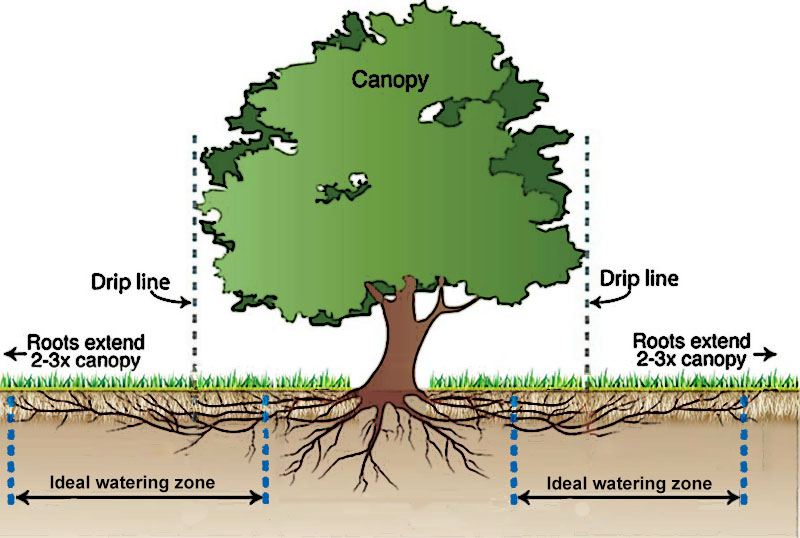By Debbie Roland and
Emmy Ulmschneider
Master Gardeners
In the past weeks we have discussed which trees grow best in West Texas, how to plant trees, and when to remove a tree. But are there proactive steps we can take for the trees in our yards?
The answer is yes there are, and they are easy to implement. First off, we need to understand that the death of a tree whether to oak wilt, disease, a fungus, or old age is a natural process. But in our home landscapes we tend to think that trees are everlasting. Extra stressors to growing trees, such as the prolonged intense heat we have experienced in the last few months, can increase the effect of disease. And the weather in our changing climate is one of those big stressors. Anything we can do to help trees overcome these stressors will help their overall health. So, what specific actions can we take?

- Monitor your trees. Walk your yard and look for signs of distress such as areas of discoloration, wilting leaves, or discolored leaves. Look for signs of fungal growth around the base or a wound. Another good idea is to take pictures of your tree routinely through the seasons, spring, summer, and fall to help you recognize what are normal changes and what are not. Get to know what your trees look like throughout the seasons.
- Prevention is the key! Perform routine maintenance by pruning your trees properly and using mulch. Taking good care of your tree, covered in our previous articles, will help you avoid problems. Be very careful using a lawn mower or a weed eater around the base of tree. As in humans, wounds are an entryway for pathogens.
- Water your trees. And water them properly! We live in an arid land. So far, in 2023, we have received around 2.7” of rain and the trees we commonly grow are very thirsty. Water deeply and consistently rather than a small amount each day.
- Plant a forest. Natural forests are not monocultures, they have a variety of kinds of trees, sizes, and shapes to offset disease, storm and wind damage. We tend to plant one kind of tree throughout our whole yard making our yards susceptible to the same kind of stressor. We want a resilient yard so plant a variety of different kinds of trees. And plant a variety of ages! Trees do not live forever and when you do have to remove one at the end of its lifespan, you have a tree to takeover that space.
- Plant natives. Natives have “seen it all” and they are the best adapted to the kind of environment we live in, a dry arid land. They require far less water thus saving you money and they supply much-needed food and shelter for our urban wildlife. If you want to know more about a native tree you are bringing in, check out the Lady Bird Johnson Wildflower Center Plant Database, wildflower.org/plants And arid tolerant natives are becoming easier to find.
So, plan for a more resilient yard that will also welcome in butterflies and birds. You just might find that you save money and enjoy getting out in your yard more.
If you have questions, call the AgriLife office in Odessa at 498-4071 or in Midland at 686-4700. Additional information, and our blog for access to past articles, is available at westtexasgardening.org. Click on “Resources.”




